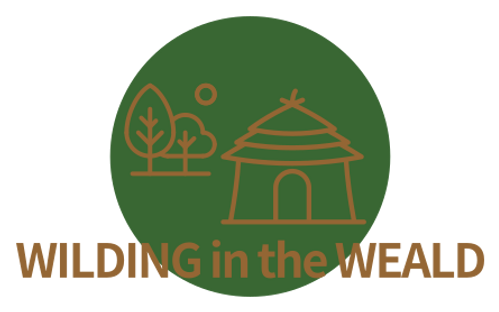
Rewilding and Conservation

Rewilding the herd
Our re-wilding journey began long before we even arrived on the land at New Coghurst, when Emma’s approach to keeping horses began its radical shift. As a life-long horsewoman from a conventional equine background, Emma had spent years working with horses and observing their behaviour. She had come to realise that horses didn’t need to live in stables, wear shoes or rugs, or be ridden to be happy and healthy. This ‘traditional’ way of keeping horses had arisen from human desire and convenience. What the horses actually needed was space to roam and graze and the security that comes with living together in a herd. So, we decided to embark on a journey towards re-wilding the herd, transitioning the horses back to the most natural state of being we could possibly facilitate. This would require lots of space for grazing, and so began our search for a farm with enough land. In December of 2012, we relocated to New Coghurst Farm. Here, the horses now have the space and freedom to live outside together in one herd, all year round.
Shifting focus
Little did we know, this was just the beginning of our re-wilding journey. As we started to let go of the conventional ways of managing land for horses we noticed, not only was the herd thriving, the land was too. As we observed the different plant and wildlife species on the farm beginning to flourish, we switched from being horse-focused to land-focused. We have come to recognise that the herd is simply one element within in a broader ecosystem. The horses have now become ‘conservation grazers’, alongside our Soay sheep (a breed native to the Highlands). Conservation grazing is a sustainable land management technique that can promote biodiversity and habitat management. One of our primary goals is to rewild the areas of the farm where monocultures had formed and restore a more diverse range of plant and animal species. As the current custodians of this diverse and complex ecosystem, we feel a deep sense of responsibility to learn how best to manage the land for the mutual benefit of all of its inhabitants: humans, plants, trees and animals alike.


Supporting biodiversity
We are increasing the biodiversity on the farm through a variety of ways, mainly through letting nature do what it wants to do but with a main focus on increasing our wild flower meadows. Ecologists helping us are observing what wild flowers are coming through before we consider whether seeding our fields would be of benefit. We make our own hay on the farm and spread it in the fields in the winter for the horses, this naturally seeds the fields with our own seeds, which we have seen the benefits of over the years. Our beautiful woodlands are already thriving and displaying signs of good health, such as large coverings of wild garlic and bluebells in the spring. We will give the woodland a gentle helping hand by opening up some areas to let in more light, which will encourage bursts of new growth that will benefit the entire ecosystem. We also leave fallen trees to decompose, which creates habitat for lots of insects and allows essential nutrients to return to the earth. Some of our fields have naturally water-logged spots, which we would like to transform into dedicated wetland areas. Hopefully this will create a whole new habitat for local birds and amphibians that are more at home in a watery environment.
Local wildlife
Our woodlands and fields are already home to many different species of birds, mammals and insects. We share the farm with deer, foxes, badgers, stoat, mice, rabbits, squirrels, woodpeckers, bats, buzzards, heron, ducks and our resident barn owl. We also currently have a beautiful (and noisy!) pair of kestrels nesting in our barn. We invite any guests who visit or stay at the farm to log any wildlife they spot. All of your wildlife stories help us to gain a broader knowledge and understanding of our ecosystem and how to take care of it.



